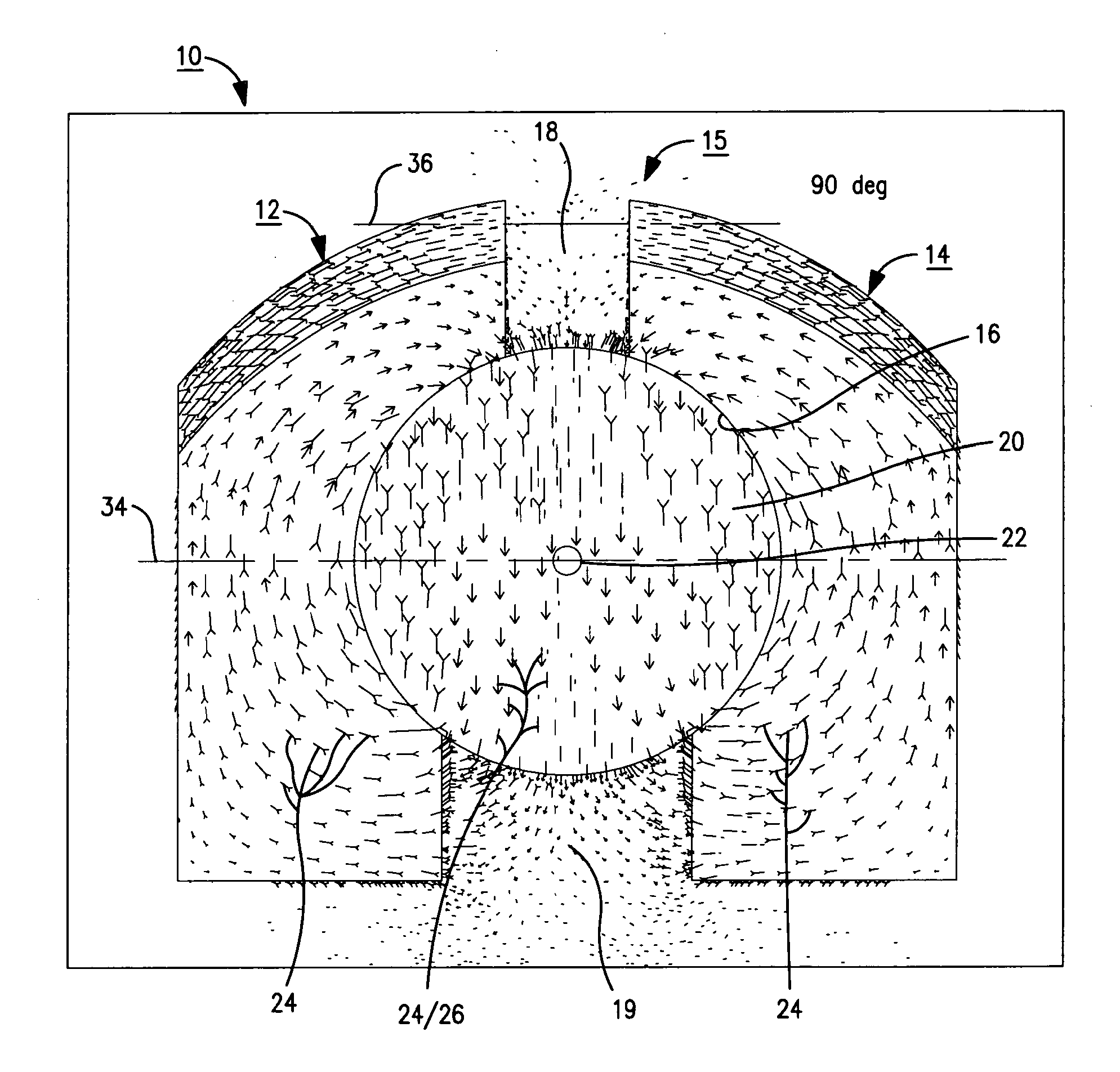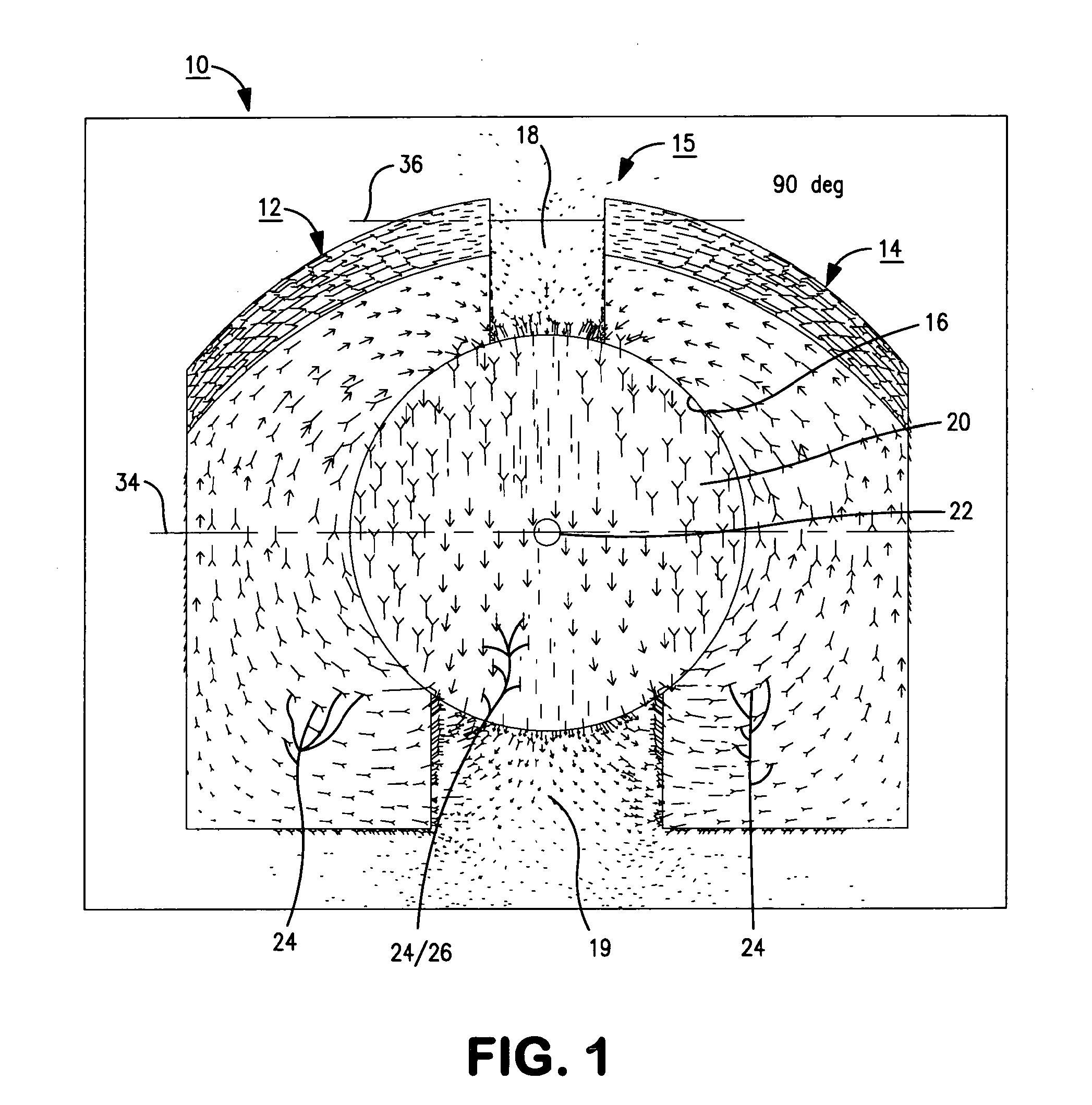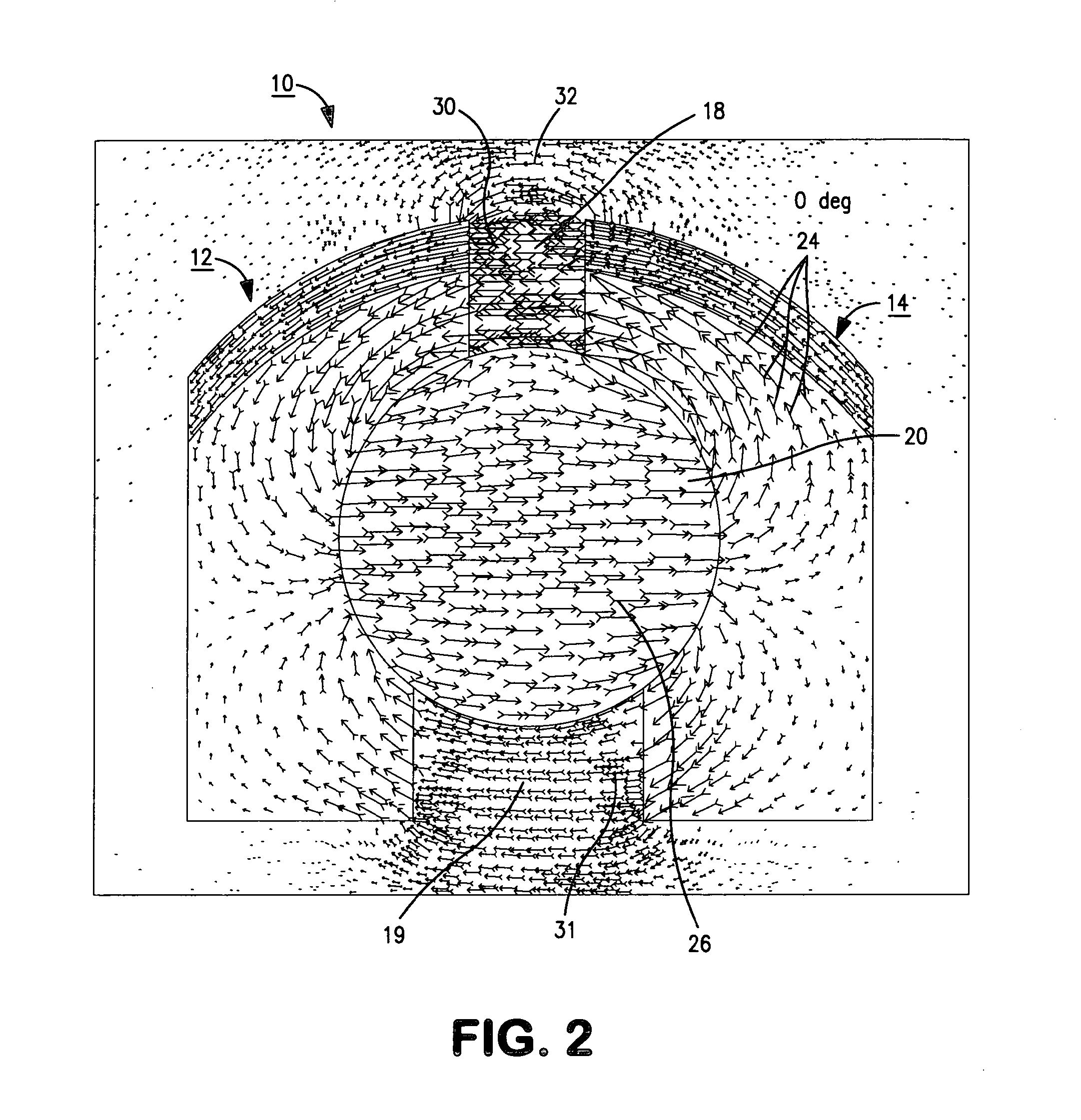System for magnetorheological finishing of a substrate
a technology of magnetorheological polishing and substrate, which is applied in the direction of magnetic bodies, lapping machines, manufacturing tools, etc., can solve the problems of difficult cleaning and maintenance of the system, inability to control the removal rate by varying the strength of the magnetic field, and inability to finish concave surfaces, etc., to achieve the effect of reducing maintenance costs and electrical power consumption
- Summary
- Abstract
- Description
- Claims
- Application Information
AI Technical Summary
Benefits of technology
Problems solved by technology
Method used
Image
Examples
Embodiment Construction
[0033]Referring to FIG. 1, a variable-field permanent magnet system 10 in accordance with the present invention comprises two poles 12,14 made of a magnetically soft material, preferably iron, defining a magnetic body 15 with a cylindrical cavity 16 bored through the center. The body halves 12,14 are joined together by a non-magnetic material such as brass, aluminum, or plastic, defining a primary magnetic gap 18 and a secondary magnetic gap 19 between halves 12,14. A cylindrical permanent magnet 20 magnetized normal to the cylinder axis 22 is inserted into cavity 16 and an actuator 110 (shown in FIGS. 5-7) is attached to allow rotation of magnet 20 about axis 22. Such a magnet is available from, for example, Dexter Magnetic Technologies, Elk Grove Village, Ill., USA. The act of rotation changes the distribution of the magnetic flux 24 in the magnetic circuit. When the field 26 of the permanent magnet is directed vertically as shown in FIG. 1, flux 24 is evenly distributed between t...
PUM
| Property | Measurement | Unit |
|---|---|---|
| angle | aaaaa | aaaaa |
| magnetic field | aaaaa | aaaaa |
| magnetically soft | aaaaa | aaaaa |
Abstract
Description
Claims
Application Information
 Login to View More
Login to View More - R&D
- Intellectual Property
- Life Sciences
- Materials
- Tech Scout
- Unparalleled Data Quality
- Higher Quality Content
- 60% Fewer Hallucinations
Browse by: Latest US Patents, China's latest patents, Technical Efficacy Thesaurus, Application Domain, Technology Topic, Popular Technical Reports.
© 2025 PatSnap. All rights reserved.Legal|Privacy policy|Modern Slavery Act Transparency Statement|Sitemap|About US| Contact US: help@patsnap.com



